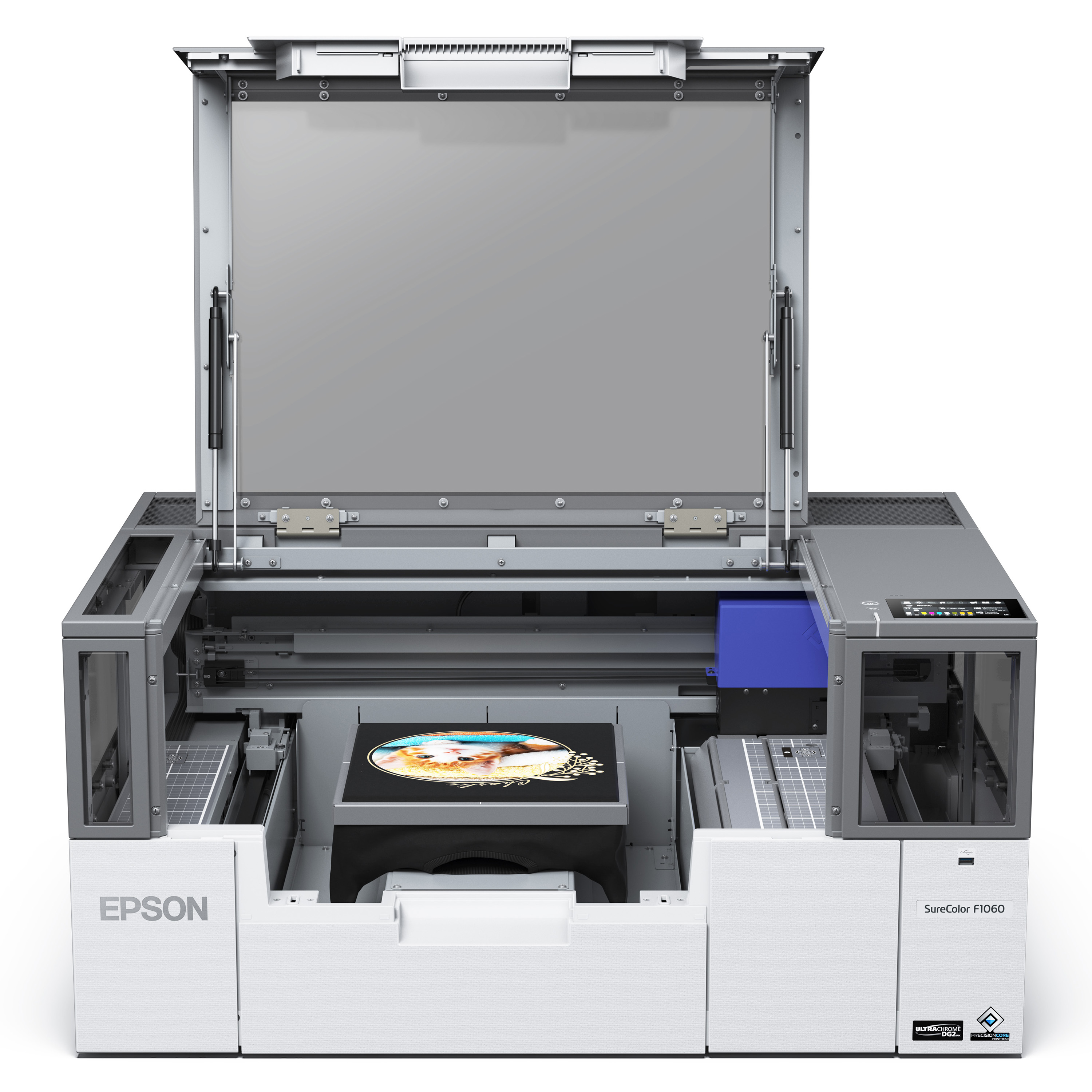How to Get Started with DTF Printing: A Complete Guide

SYDNEY, Australia - February 13, 2024
In this article, we cover the essential requirements to get started with direct-to-film (DTF) printing, from which equipment and software you need to profitability and home-based operations.
Direct to Film (DTF) printing continues to gain popularity in the digital printing landscape, offering a versatile and cost-effective solution for creating high-quality prints on a wide variety of textiles. Whether you're a hobbyist looking to explore new creative avenues or an entrepreneur aiming to tap into a lucrative market, getting started in DTF printing can be an exciting journey.
What is needed for DTF printing?
 Starting in DTF printing requires a few key components:
Starting in DTF printing requires a few key components:
- DTF Printer: A specialised DTF printer capable of printing on DTF films
- DTF Film: These are the transfer films where your designs are printed before being transferred to the fabric
- DTF Adhesive Powder: After printing, a powder adhesive is applied to the print on the DTF film. This adhesive ensures the design adheres to the fabric when heat pressed
- Heat Press: A heat press is used to transfer the design from the DTF film to the fabric
- RIP Software: This software is crucial for managing colour correction and ink consumption efficiently.
What program do I need for DTF printing?
Choosing the right software is crucial for achieving high-quality DTF prints. While several programs are available, two of the most popular are:
- Adobe Photoshop: Known for its versatility and advanced features, Photoshop is ideal for creating and editing designs for DTF printing.
- CorelDRAW: Another powerful option, CorelDRAW offers excellent vector graphics capabilities, making it especially useful for DTF printing.
Both programs offer robust colour management and design tools, making them suitable for DTF printing. Ultimately, the choice depends on personal preference and the specific needs of your projects.
What is the best printer for DTF printing?
While the market offers various options, the proof isn't always in the printer, it's in the inks. Selecting a solution that was designed from the ground up to decorate garments/textiles means that the ink formulation is designed especially to adhere to fabric and other material. That's why garment printers form the base of some of the DTF solutions that are available from GJS. If you're looking for a high-performance, all-in-one DTF solution, the Coltex D604+ is the perfect choice. This 60cm wide DTF printer comes with an integrated powder shaker and dryer/curer, delivering blistering speeds of up to 27.5 linear meters per hour in dual CMYK+W configuration. For those interested in hybrid printing, models like the Brother GTXpro Bulk, Brother GTXpro, Epson F1060, and Epson SC-F2260 offer both direct-to-garment and direct-to-film printing, giving you the best of both worlds. Alternatively, if you're not looking for a sheet-fed solution, the Roland BY-20 DTF printer offers a compact yet powerful roll-to-roll option, consistently producing vibrant, high-resolution graphics and text with impressive detail.
Is there money in DTF printing?
Absolutely. The demand for custom apparel and merchandise continues to grow, and DTF printing offers a flexible and efficient way to meet this demand. With its ability to print on a wide variety of fabrics and colours without the need for pre-treatment, DTF printing provides a competitive edge in the market. Entrepreneurs can leverage this technology to offer custom printing services or create their own branded merchandise. The key to profitability lies in quality, creativity, and market understanding.
Can I print DTF transfers at home?
Yes, DTF printing can indeed be done at home, making it an accessible venture for hobbyists and small business owners alike. The compact size of many DTF printers, like the A4 Epson SC-F1060, makes them suitable for home setups. However, it's essential to have a dedicated workspace due to the need for handling inks, powders, and heat pressing equipment.
Getting started
- Research: Understanding the DTF printing process and market is your first step. Spend time learning about the equipment, materials, and software needed.
- Invest wisely: Choose your printer, inks, and other materials based on your budget and business goals. It's often better to start small and scale up as you grow.
- Experiment: Before offering your services or products, take the time to experiment with different fabrics, designs, and settings. This will help you understand the capabilities and limitations of your setup.
- Market your business: Once you're confident in your offering, it's time to market your business. Social media, online marketplaces, and local networking events are excellent ways to start building your customer base.
The verdict
DTF printing presents a fantastic opportunity for creative individuals and entrepreneurs to explore the world of digital textile printing. With the right equipment, software, and a bit of creativity, you can produce stunning, high-quality prints from the comfort of your home. Remember, success in DTF printing, like any business, requires dedication, quality work, and effective marketing. Start small, learn continuously, and don't be afraid to experiment. The world of DTF printing awaits your unique designs and ideas.
About the Author

About GJS
GJS is Australia’s premier provider of solutions and services for the textile, promotional products, custom photo gift, sign and display industries. With over 47 years’ experience, GJS supplies everything needed to start and operate a successful printing business including equipment, consumables, training and support. Headquartered in Revesby, NSW, and with additional teams located in Victoria and Queensland, GJS serves customers throughout Australia, New Zealand, and the Pacific Islands. For more information visit: gjs.co. GJS and the GJS logo are trademarks or registered trademarks of GJS. Other names are trademarks of their respective owners.

